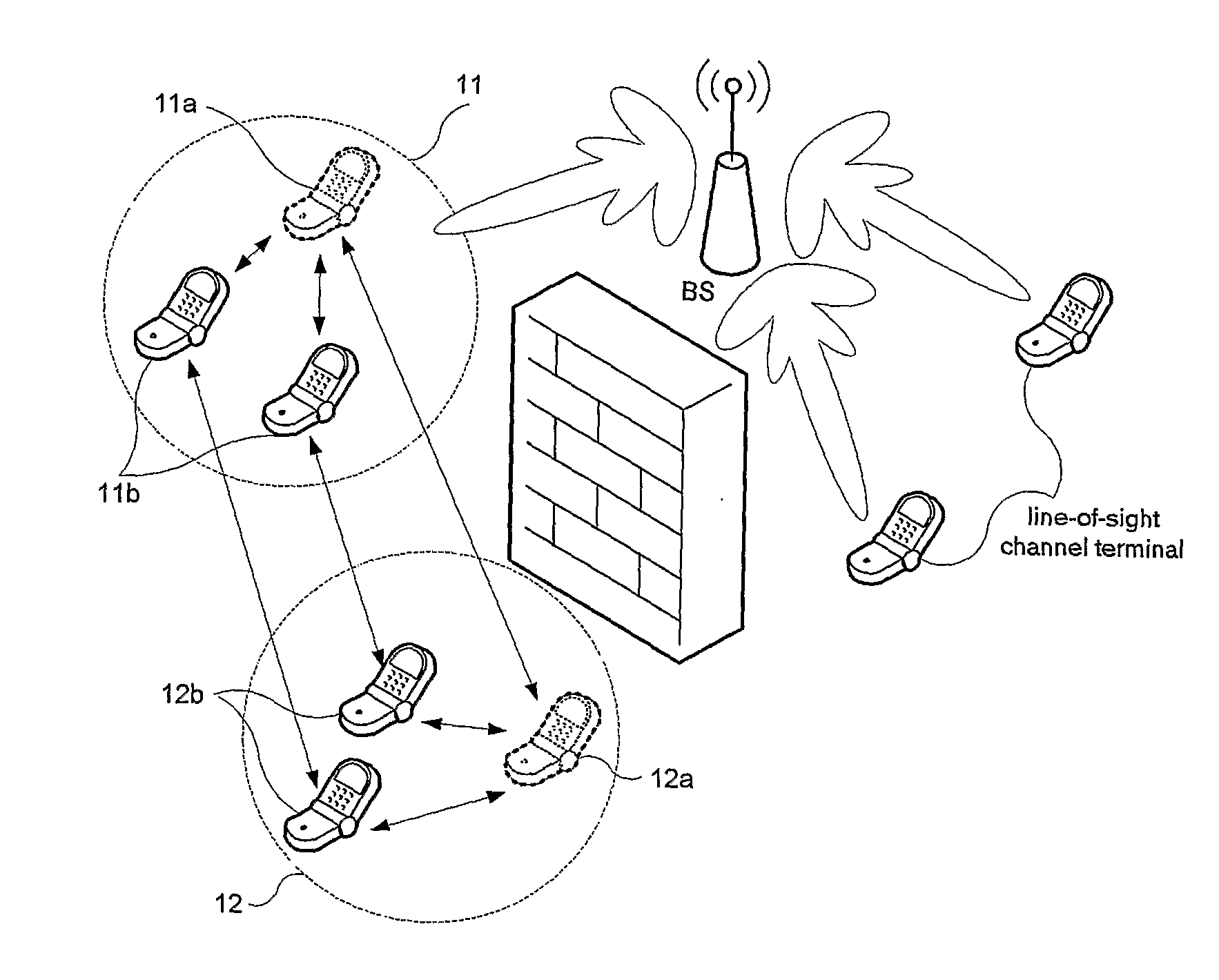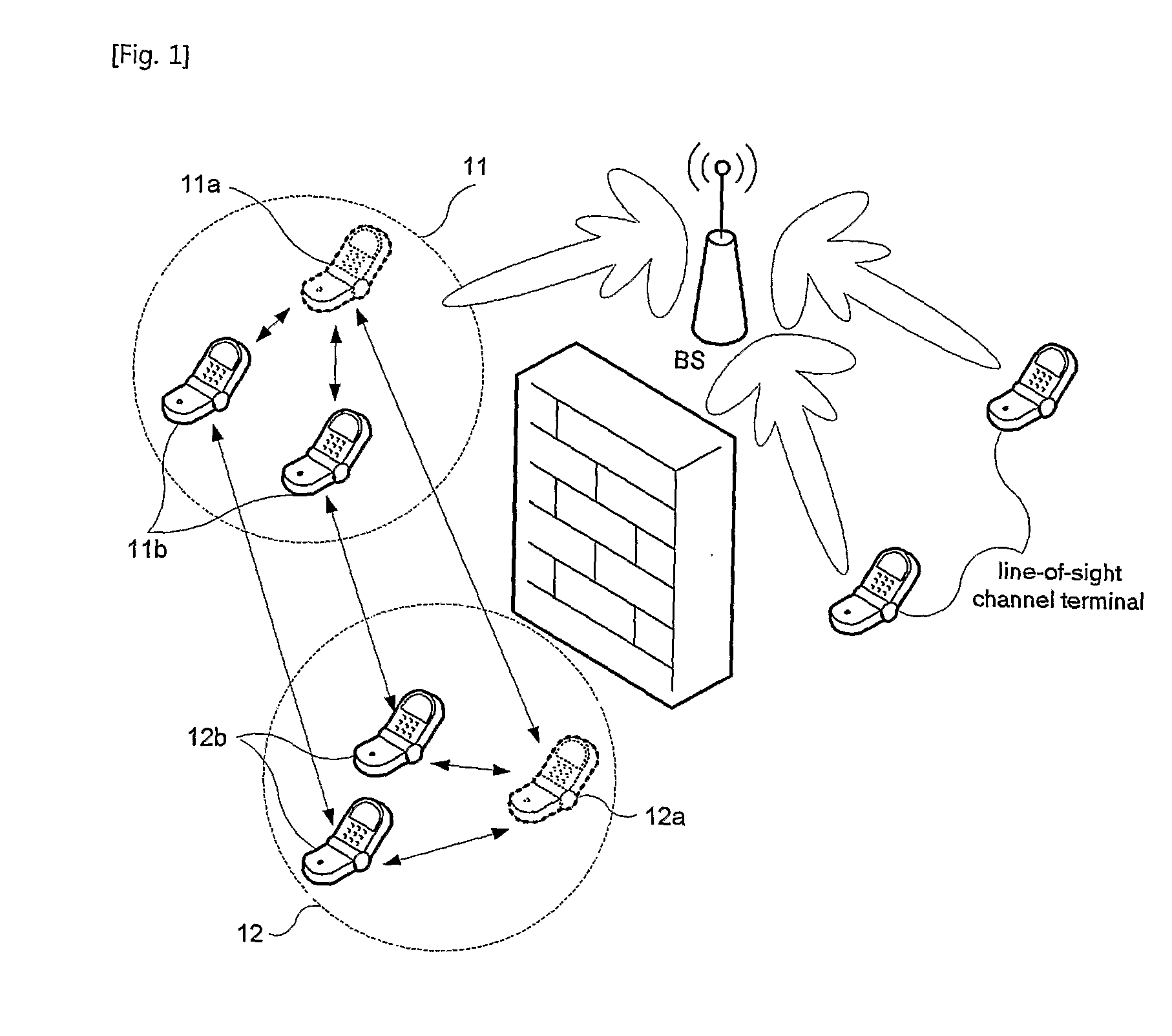Method of communicating and establishing relay channel between base station and non-line-of-sight channel terminal in next generation cellular communication system
a communication channel and relay technology, applied in the direction of digital transmission, error prevention, electrical equipment, etc., to achieve the effect of waste in which a base station assigns resources
- Summary
- Abstract
- Description
- Claims
- Application Information
AI Technical Summary
Benefits of technology
Problems solved by technology
Method used
Image
Examples
first embodiment
[0054]FIG. 5 is a flowchart showing a method of establishing a relay channel and communicating between a base station and a non-line-of-sight channel terminal according to the present invention.
[0055]When the channel environment of the terminal changes from a line-of-sight channel environment to a non-line-of-sight channel environment, the terminal transmits a channel report message to the base station using a control channel slot, as shown in FIG. 3.
[0056]The non-line-of-sight channel terminal periodically broadcasts a grouping request message in a high frequency band to adjacent terminals, and provides notification of the transmission of the grouping request message to the base station by transmitting a grouping attempt message to the base station using a control channel slot at step S51. The grouping request message includes the ID of the non-line-of-sight channel terminal and transmission time. Since the grouping request message is broadcast in a high frequency band, only some o...
second embodiment
[0065]In the present invention, a non-line-of-sight channel terminal transmits a grouping request message, intercepts one or more grouping response messages transmitted by one or more adjacent terminals to a base station, and determines whether there are one or more relay channel terminals by analyzing the analyzed grouping response messages. If it is determined that there is no relay channel terminal, the non-line-of-sight channel terminal waits until the base station transmits a grouping success message, and communicates via the high frequency band cellular communication system using a relay channel when a grouping success message is received. Meanwhile, if it is determined that there is no relay channel terminal, the non-line-of-sight channel terminal immediately prepares for low frequency band cellular communication.
[0066]According to the second embodiment of the present invention, in the case where a relay channel cannot be established, a non-line-of-sight channel terminal prep...
PUM
 Login to View More
Login to View More Abstract
Description
Claims
Application Information
 Login to View More
Login to View More - R&D
- Intellectual Property
- Life Sciences
- Materials
- Tech Scout
- Unparalleled Data Quality
- Higher Quality Content
- 60% Fewer Hallucinations
Browse by: Latest US Patents, China's latest patents, Technical Efficacy Thesaurus, Application Domain, Technology Topic, Popular Technical Reports.
© 2025 PatSnap. All rights reserved.Legal|Privacy policy|Modern Slavery Act Transparency Statement|Sitemap|About US| Contact US: help@patsnap.com



